The World after World War II - Chinese Revolution | 10th Social Science : History : Chapter 4 : The World after World War II
Chapter: 10th Social Science : History : Chapter 4 : The World after World War II
Chinese Revolution
Chinese Revolution
(a) China in the Pre-War Period
In its
long history, Chinese civilization was more advanced than that of Europe. But
by the end of the nineteenth century, its progress had halted. The Manchus, the
ruling dynasty, had governed China since about 1650. The entire administration
system was in the hands of a bureaucracy of scholar-officials called mandarins
who came from the landed gentry. The mass of peasant population was poverty-stricken,
and suffered from high rents, high taxes, and shortage of land. There was very
little industry, though some railways and engineering works had been built.
Discontent
with the political and economic system resulted in a number of peasant
uprisings. The Taiping Rebellion (1850–64) was a major rebellion. In the two
opium wars of 1832 and 1848, China was defeated and was compelled to open its
ports to western powers. The opening of China to western imperialism led to
economic exploitation and the impoverishment of the Chinese people.
The
European presence produced a profound hatred of foreigners. This combined with
military defeat, led to more pressing demands for reforms from the
Western-educated intellectuals. In 1898, the young Emperor, initiated a series
of reforms known as the Hundred Days of Reform. But these reforms aroused
tremendous opposition from the powerful conservatives and the Dowager-Empress
Tzú Hsi. She imprisoned the Emperor and reversed the reforms.
(b) The Chinese Revolution 1911
The disintegration
of the Manchu dynasty began with the death of the Dowager-Empress in 1908. The
new emperor was two-years old and the provincial governors began to assert
their independence. In October 1911 the local army mutinied and the revolt
spread. Provincial governors removed the Manchu garrisons and proclaimed their
independence. Already there were a few middle-class leaders. Dr. Sun Yat-sen
was one among them. On hearing the news of the rising in a newspaper in the
United States Sun Yat-sen arrived in Shanghai and was immediately elected
provisional president of the new Chinese Republic.
Dr. Sun Yat-sen (1866–1925)

Born in a poor family near Canton, Dr. Sun Yat-sen, the father
of modern china was educated in a mission school and became a Christian. He was
then trained as a doctor of medicine in Hong Kong. Evincing interest in
politics he took part in a rising against the Manchus in 1895. In 1905 he
founded in Tokyo the political party which in 1912 became the Kuomintang or the
National People’s Party. Dr. Sun Yat-sen’s three principles were Nationalism,
Democracy, and People’s livelihood with Socialism as the ultimate object.
(c) Yuan Shih-kai and After
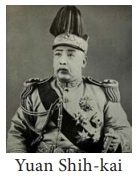
The unity
of China under Yuan Shih-kai lasted for four years. On his death in 1916 a new
President was appointed for the next twelve years but the government was
central only in name.
(d) Communist Party of China
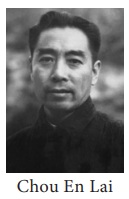
With the Revolution
and the breakup of the old society, Confucian thought was generally side-lined
and after the Russian Revolution of 1917, the ideas of Marx and Lenin became
popular among intellectuals. In 1918 a Society for the Study of Marxism was
formed in Peking University. Among the students who attended was Mao Tse-tung.
Mao Tse-tung (1893–1976)
Mao was born in Hunan in south-east China. His father was a
wealthy peasant, and a firm supporter of the Manchus.
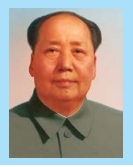
Mao, who was very fond of reading, soon showed his ability and
entered the Junior College at Changsha. This was the year (1911) when the
Revolution had broken out in China. Mao joined the revolutionary army but soon
left and enrolled in the Teachers’ Training College in Changsha. In the
following year Mao began his full-fledged political activities of Hunan and
emerged as a staunch Communist.
Kuomintang and Chiang Kai Shek
After the
death of Sun Yat Sen the leader of the Kuomintang was Chiang Kai-shek. While
the Communist Party was under Mao Tse Tung and Chou En Lai. As an avowed critic
of Communists, Chiang removed all of them from important positions in the
party. The communists increased their influence among the workers and peasants
and obtained recruits for their army. The Kuomintang represented the interests
of the landlords and capitalists.
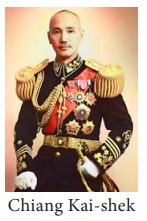
In 1928
he was successful in capturing Peking. Once again there was a central
government in China.
Mao as Organizer of Peasants
Mao had
understood that the Kuomintang grip on the towns was very strong. So he
concentrated his energies on organizing the peasantry. A few hundred Communists
led by Mao retreated into the wild mountains. Here they stayed for the next
seven years. As the army of Mao was gradually growing, the Kuomintang was
unable to penetrate the mountains. The campaign against the communists was
distracted as Chiang Kai-shek had to deal with the constant threat from Japan
and also the attacks from war lords.
The Long March 1934
As Chiang
Kai-shek had built a circle of fortified posts around the communist positions,
Mao wanted to move out of Hunan for safer territory. By 1933 Mao had gained
full control of the Chinese Communist party. In 1934, the Communist army of
about 100,000 set out on the Long March. This march has become legendary. Of
the 100000 who set out, only 20,000 finally reached northern Sheni late in
1935, after crossing nearly 6000 miles. They were soon joined by other
communist armies. By 1937 Mao had become the leader of over 10 million people.
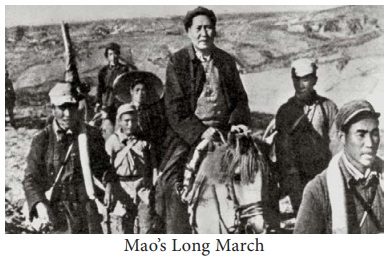
Japanese Aggression
Japan
continued to occupy north Chinese provinces while developing Manchuria as a
military base. Mao believed that Chiang Kai-shek was necessary for some time to
hold together Kuomintang to fight the Japanese. As a consequence of this
pragmatic policy, the attacks on the communists gradually stopped.
Communist Victory
With the
surrender of the Japanese (1945), both the Kuomintang and the communists sought
to occupy the Japanese areas. In this race the Kuomintang was successful. The
cities and railways soon fell into their hands. Even the area around Peking was
soon controlled by Chiang Kai-shek’s forces, largely because of the military
aid given by the USA.
With the
massive support provided by the USA Kuomintang government controlled the
administration, ports and communication system. But the soldiers, mainly drawn
from the peasants, were disillusioned and discontented. Mao was keen on
obtaining the support of the middle class. So he declared that what the
communists wanted was the rule of the people, not the dictatorship of the
proletariat; the end of exploitation, not absolute equality.
National People’s Congress
In
September 1949, before fighting had ended in the south of China, the people’s
Political Consultative Conference met in Peking. Consisting of over 650
delegates from the Communist Party and other left-wing organizations, the
conference elected the Central Governing Council with Mao as its Chairman.
The
establishment of the People’s Republic of China under the leadership of Mao Tse
Tung was a world-shaking event. There were now two mighty Communist powers in
the world —the Soviet Union and People’s Republic of China.
Denial of UNO Membership
The
United-States refused to recognize the People’s Republic of China for more than
two decades.
Related Topics